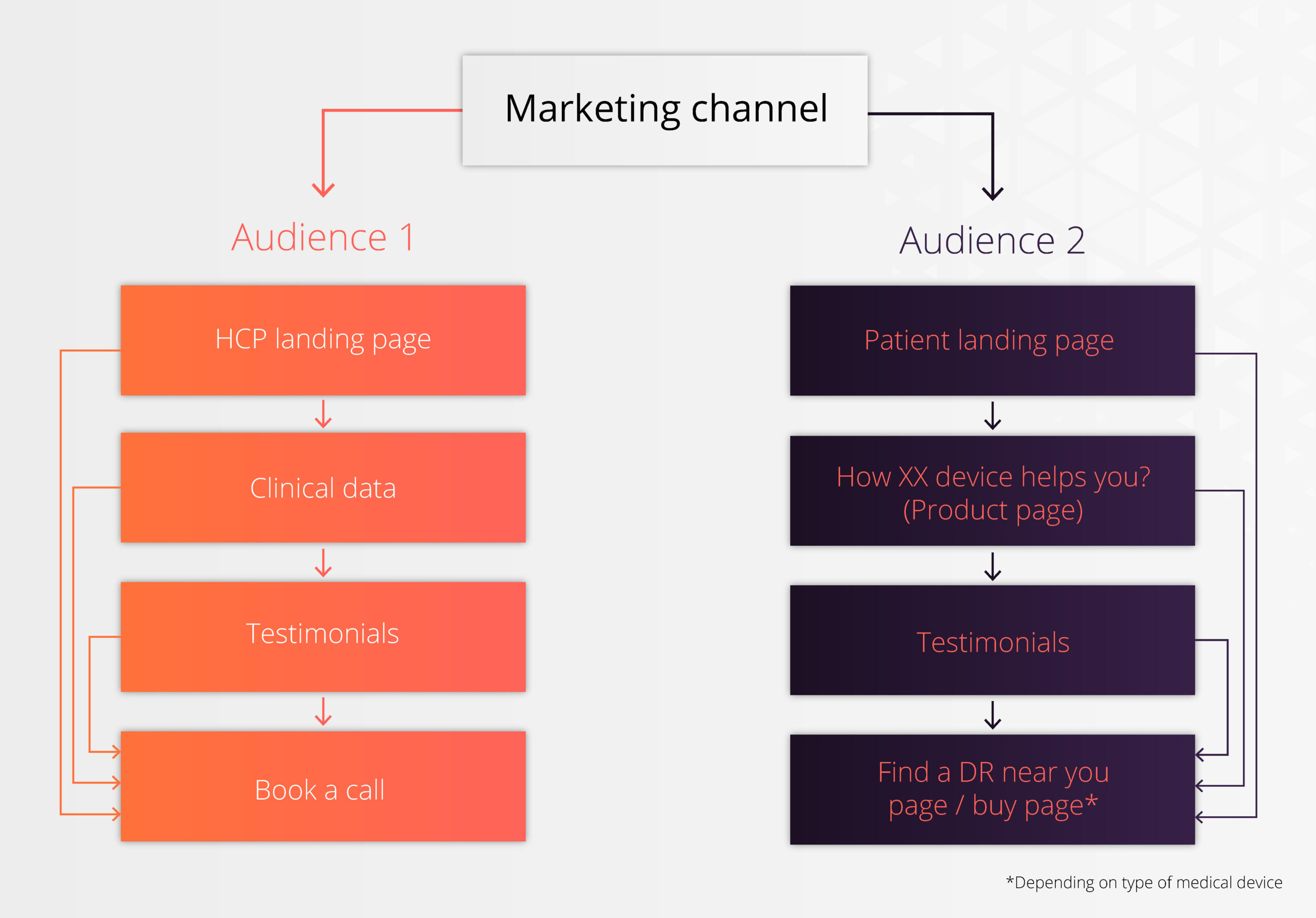It’s not enough for your website to simply exist, it must communicate effectively, conveying how your product, technology or services resolves the specific challenges faced by your different audience groups.
As you know, a universal message will fail to engage each audience equally, so different journeys are key to captivate and engage your viewers.
Creating multiple customer journeys (e.g. for surgeons, radiologists, nurses, procurement and the investor community) might seem daunting, but it’s a critical step in plotting the path for your visitors. This strategy isn’t about duplicating content; it’s about refining communication to engage each visitor in the most effective way possible, ultimately driving them to connect with you over your competitors.















